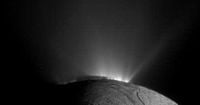Saturn’s moon Enceladus, a tiny, ice-blanketed world orbiting in the planet’s shadow, has once again captured the imagination of scientists and the public alike. On October 1, 2025, an international team of researchers announced the discovery of new types of organic molecules in the icy geysers that erupt from Enceladus’s south pole—a finding that bolsters the moon’s reputation as one of the most promising candidates in the search for extraterrestrial life within our solar system. Their results, published in Nature Astronomy, are the product of painstaking analysis of data collected by NASA’s Cassini spacecraft during a daring flyby back in 2008.
Enceladus, though only about 310 miles (500 kilometers) across, has long stood out among Saturn’s 274 moons. For years, it was thought to be too far from the Sun and too cold to support life. But the Cassini mission, which orbited Saturn from 2004 to 2017, changed that view dramatically. According to Reuters, Cassini revealed that beneath Enceladus’s kilometers-thick icy crust lies a vast saltwater ocean, complete with suspected hydrothermal vents akin to those found on Earth’s ocean floors. These vents, especially in the Arctic, are known to teem with life despite the absence of sunlight—a tantalizing parallel for astrobiologists.
During its 2008 flyby, Cassini flew directly through plumes of water vapor and ice grains shooting out of cracks near Enceladus’s south pole. These jets, which can stretch thousands of miles into space, are thought to be powered by the moon’s internal heat. As Cassini zipped through the geysers at a blistering 40,000 mph (64,800 kph), its Cosmic Dust Analyzer collected samples of the ejected ice grains. The high-speed collisions provided a unique opportunity: the fresh grains, much younger than those that eventually settle into Saturn’s outer rings, offered a purer glimpse into the moon’s subsurface ocean.
Previous studies had already detected organic molecules in older grains from Enceladus, but there was always a lingering doubt. Had these molecules been altered by years—perhaps centuries—of exposure to space radiation? The new analysis, described by the Associated Press, confirms that not only are some of the same molecules present in the fresher grains, but entirely new organic compounds have been detected as well. This is a crucial point, as it strengthens the case that these molecules originate directly from Enceladus’s ocean, rather than being the result of cosmic wear and tear.
“We are confident that these molecules originate from the subsurface ocean of Enceladus, enhancing its habitability potential,” said Nozair Khawaja, the study’s lead author from the Free University of Berlin, in an email to AP. The findings, he explained, provide further evidence that Enceladus has all the right ingredients for life: water, organic molecules, energy sources, and the right chemistry.
Of course, as the University of Washington’s Fabian Klenner cautioned, there’s a world of difference between being habitable and being inhabited. “Being habitable and being inhabited are two very different things. We believe that Enceladus is habitable, but we do not know if life is indeed present,” Klenner told AP. The discovery of complex organics—including precursors to amino acids, which are fundamental building blocks of life—doesn’t guarantee that life has taken hold in those alien seas. But it does make the moon an even more attractive target for future missions.
French astrochemist Caroline Freissinet, who was not involved in the study, told AFP that there was “not much doubt” these molecules are in Enceladus’s ocean. Still, she emphasized that to truly understand what’s happening beneath the ice, scientists will need to land near the geysers and collect samples directly. “This confirmation provides another piece in the puzzle,” she noted, adding that advances in artificial intelligence have allowed researchers to perform new kinds of analysis on old data—breathing new life into the Cassini archives.
The Cassini mission itself was a triumph of international collaboration. Launched in 1997 and operated jointly by NASA, the European Space Agency (ESA), and the Italian Space Agency, Cassini spent 13 years exploring Saturn and its moons before being deliberately plunged into the planet’s atmosphere in 2017. The decision to end the mission in this dramatic fashion was made to avoid any risk of contaminating Enceladus or other potentially habitable moons with terrestrial microbes.
With Cassini gone, the torch has been passed to the next generation of explorers. ESA is in the early planning stages of a mission to land on Enceladus, though such a venture is likely decades away. China, not wanting to be left behind, has also proposed a landing mission. Meanwhile, NASA has set its sights on another icy world: Jupiter’s moon Europa. The Europa Clipper spacecraft, already en route, is expected to begin orbiting Jupiter in 2030, conducting dozens of flybys to hunt for the ingredients of life. ESA’s Juice mission, launched in 2023, is also headed to the Jovian system to study Europa and two other ocean-bearing moons.
Why all this focus on these distant, frozen moons? As University of Kent physics professor Nigel Mason, who was not involved in the Enceladus study, told AP: “Underground oceans on moons are perhaps the best candidates for the emergence of extraterrestrial life in our solar system. This work only confirms the need for further studies.” The logic is compelling: where there is water, energy, and organic chemistry, life—at least as we know it—might not be far behind.
The new findings from Enceladus have also highlighted the value of revisiting old data with new tools. As Freissinet pointed out, artificial intelligence and improved analytical techniques have allowed scientists to extract more information from Cassini’s records than was possible even a few years ago. This not only underscores the lasting legacy of the Cassini mission but also suggests that our understanding of Enceladus is still evolving.
“Having a variety of organic compounds on an extraterrestrial water world is simply phenomenal,” Klenner said in an email to AP. For planetary scientists, every new discovery is a reminder of how much remains unknown—and how much more there is to explore.
ESA summed it up succinctly in a recent statement: “Enceladus ticks all the boxes to be a habitable environment that could support life.” As Khawaja added, “Even not finding life on Enceladus would be a huge discovery, because it raises serious questions about why life is not present in such an environment when the right conditions are there.”
With each new revelation, Enceladus’s status as a prime target in the search for life beyond Earth grows stronger. The next steps—perhaps decades away—may finally answer the age-old question: are we alone in the universe? For now, the little moon with its spectacular geysers continues to keep its secrets, beckoning humanity to return and take a closer look.



